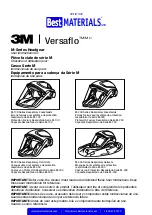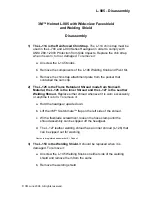
________________________________________________________________________
XDI200 Manual Version 0.1
- Page 71 -
©2017 Electromotive, Inc.
Once the idle minimum and maximum is set, rev the engine to various RPMs to make sure that
the engine returns smoothly to the correct idle speed. Adjust the Reset position until it does.
Adjust the falling sensitivity until the idle settles above the target and the arrow indicators for the
IAC flicker back and forth. Reduce the falling rate sensitivity until the idle drops. Adjustments to
this value should be made in increments of 1 or 2. Adjusting more than that can very quickly
cause the RPMs to oscillate.
Once the idle is stable and revs return smoothly to the target idle speed, the car should then be
drivable. Little if any adjustments should be required to finalize the idle settings.
8.4.4 Error Sensitivity
Error Sensitivity controls how rapidly the idle motor will move in reaction to the error of RPM at
any given time. The picture below shows how the
XDI200
unit finds error.
8.4.5 RPM Rate-of-Change Sensitivity
Rate-of-Change sensitivity controls how rapidly the idle motor moves in reaction to the RPM
changing. For example, if the RPM is dropping slowly as in example A in Figure 2, the Rate-of-
Change sensitivity will result in very little reaction. If the RPM is dropping rapidly as in example B
in Figure 2, the reaction will be larger. The Rate-of-Change calculation will always work against
the direction of motion. This is the adjustment that will prevent the engine from stalling when the
throttle is closing. It can be thought of as an adjustable dashpot.
Figure 90
















































